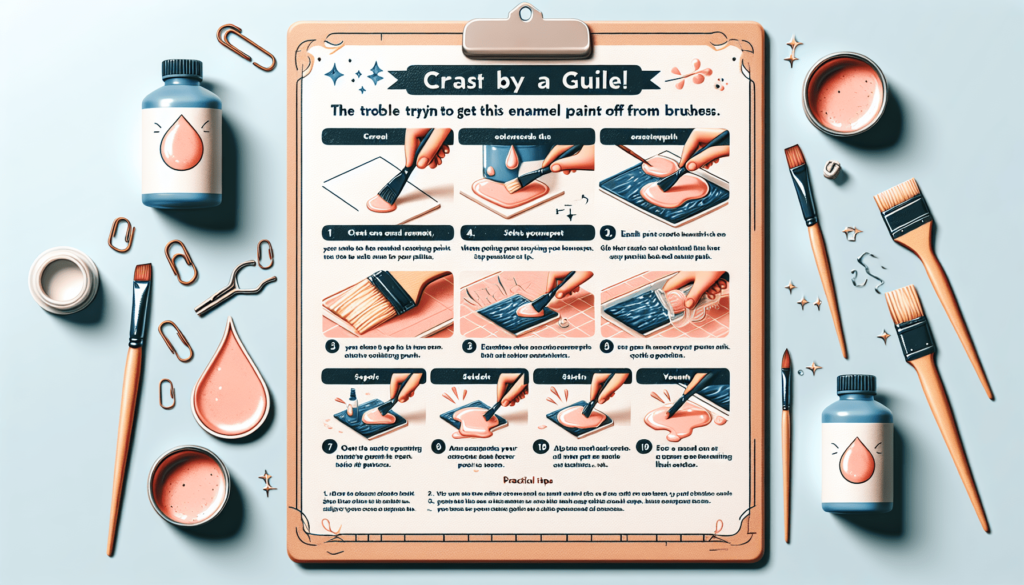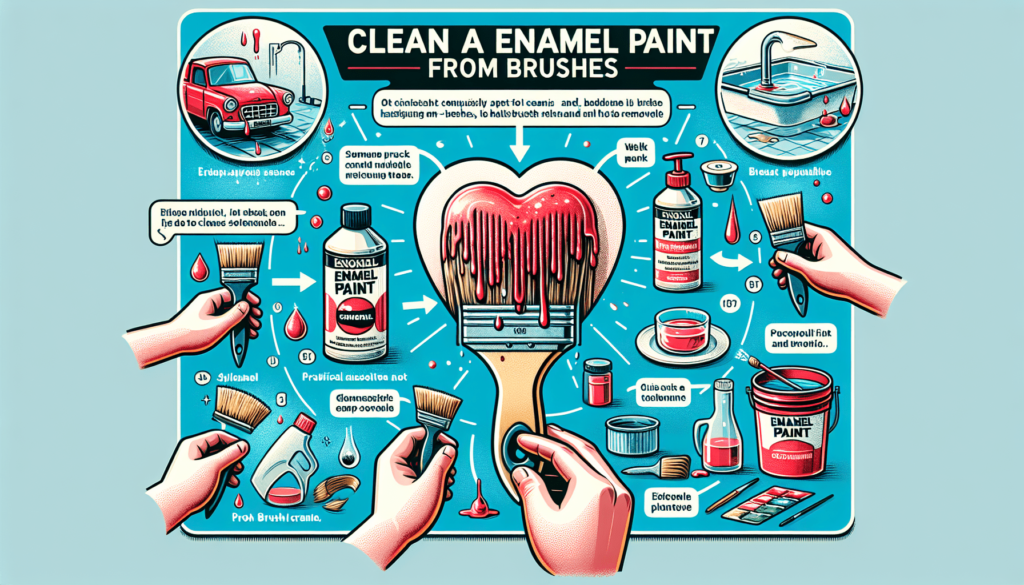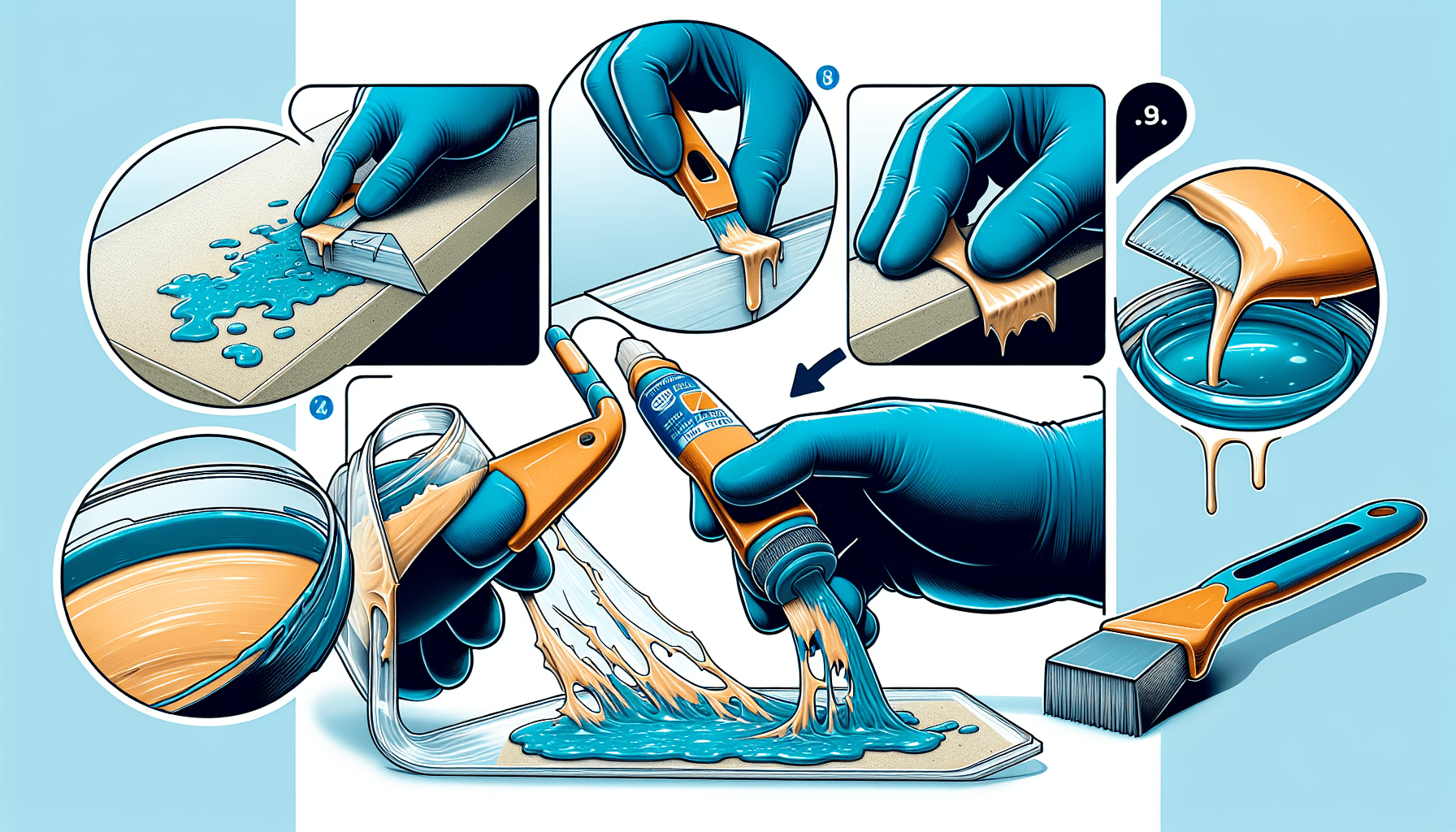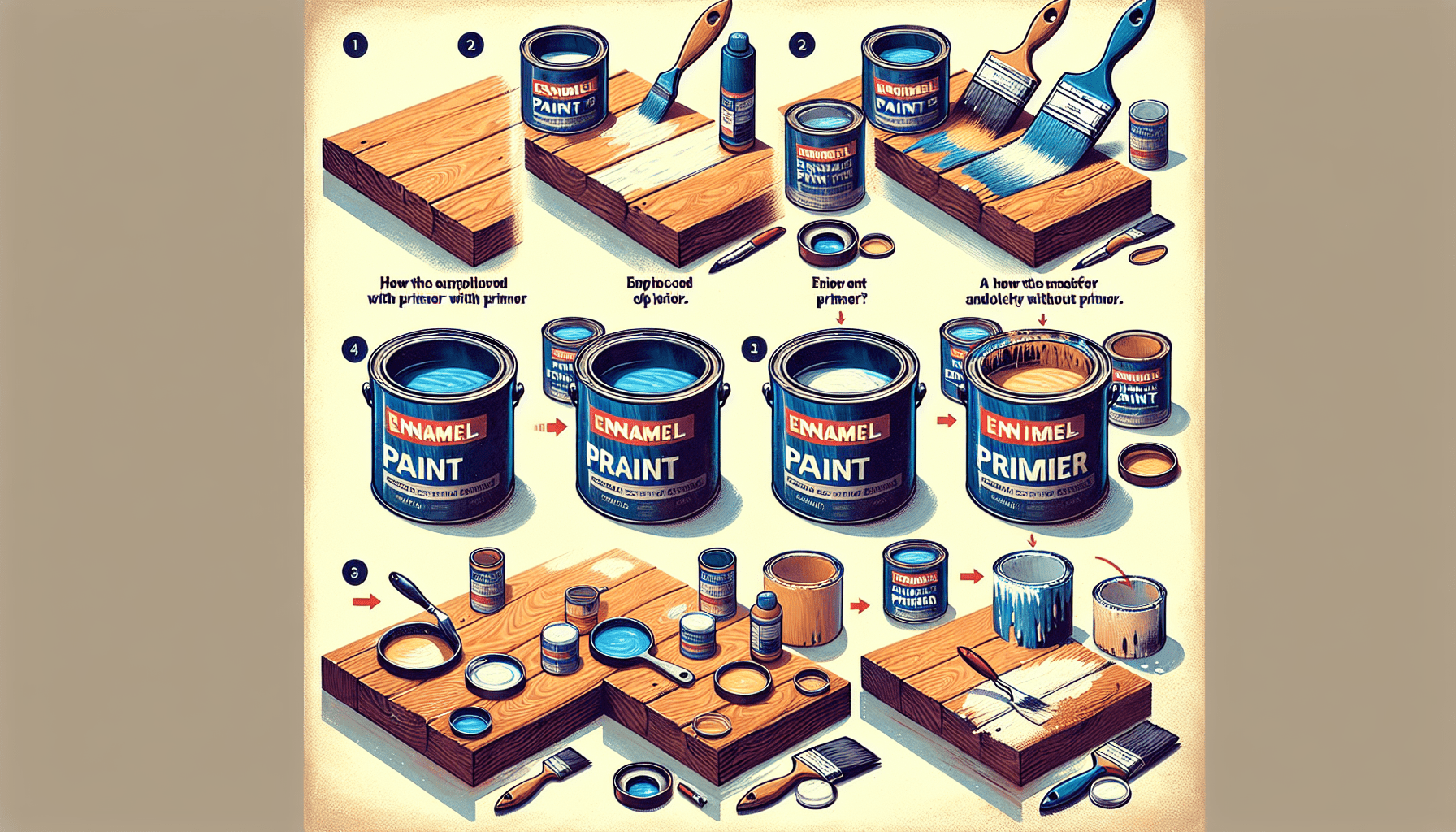Maintaining clean and well-functioning brushes is essential for any artist or DIY enthusiast working with enamel paint. However, the process of cleaning enamel paint from brushes can often be a challenge. In this article, you will discover effective techniques and tips on how to cleanse your brushes thoroughly, ensuring their longevity and optimal performance. By following these expert suggestions, you will be able to effortlessly remove enamel paint residue and preserve the quality of your brushes, allowing you to focus on honing your artistic skills or completing your DIY projects seamlessly.

Gather Materials
To clean enamel paint from brushes, you will need several materials to ensure a thorough and effective cleaning process. These materials include protective gloves, old newspaper or a drop cloth to protect your workspace, water, mineral spirits or paint thinner, a bucket or container, and a soft cloth or paper towels. Having these materials at hand will make the cleaning process much smoother and more efficient.
Remove Excess Paint
Before you begin the cleaning process, it is important to remove any excess paint from the brush. You can do this by gently scraping off any excess paint using a paint scraper or the edge of a putty knife. Once the excess paint has been removed, you can wipe the brush against the side of a container to further remove any remaining paint residue. This step is crucial as it helps to prevent the paint from hardening and caking on the bristles.
Rinse the Brush
After removing the excess paint, it is time to rinse the brush. Start by running the bristles under warm water, ensuring that the water permeates through the bristles from the base to the tip. Use your fingers to carefully squeeze the bristles, helping to dislodge any remaining paint particles. Repeat this process until the water runs clear, indicating that most of the paint has been removed from the brush.
Create a Cleaning Solution
To effectively clean enamel paint from brushes, it is important to create a suitable cleaning solution. You can do this by filling a bucket or container with warm water and adding a small amount of dish soap or mild detergent. Mix the solution gently to create a soapy mixture that will help to break down and remove the remaining paint.

Soak the Brush
Once the cleaning solution is ready, it is time to submerge the brush in the mixture. Ensure that the bristles are fully covered and allow the brush to soak for approximately 10-15 minutes. This soaking process helps to further loosen and dissolve the paint, making it easier to clean off the brush.
Scrub the Brush
After the brush has soaked for the recommended time, it is time to scrub the bristles. Use a soft cloth or paper towels to gently scrub the bristles, paying special attention to the base where stubborn paint particles may have accumulated. Continue scrubbing until the bristles are clean and free from any paint residue. This step may require some patience and persistence, but it is crucial for a thorough cleaning job.
Rinse and Repeat
Once you have finished scrubbing the bristles, rinse the brush under warm water again to remove any remaining cleaning solution and paint particles. Take a close look at the bristles and check for any remaining traces of paint. If needed, repeat the soaking and scrubbing process to ensure that all the paint is fully removed from the brush. Thoroughness is key when it comes to cleaning enamel paint from brushes.
Remove Stubborn Paint
In some cases, there may still be stubborn traces of paint that are difficult to remove using water and soap alone. If this is the case, you can use mineral spirits or paint thinner to tackle these persistent paint particles. Dampen a cloth with the solvent and carefully wipe the bristles, moving from the base to the tip. This method helps to dissolve and remove any remaining paint, ensuring a clean brush.
Final Rinse
After the brush has been thoroughly cleaned and any stubborn paint removed, it is important to give it a final rinse. Run the brush under warm water one last time to remove any soap or solvent residue that may still be clinging to the bristles. This final rinse helps to ensure that the brush is clean and free from any leftover cleaning solution or paint particles.
Shape and Dry
Before storing the brush, it is important to reshape the bristles to their original form. Gently use your fingers to reshape the bristles, ensuring that they are straight and aligned. After reshaping, you have two options for drying the brush. You can either lay it flat on a clean surface, such as a towel or old newspaper, or hang it upside down to allow any remaining water to drip off. It is crucial to avoid storing the brush until it is completely dry to prevent any mold or mildew from forming on the bristles.
By following these steps and using the appropriate materials, you can effectively clean enamel paint from brushes. Remember to gather all the necessary materials, remove excess paint, rinse the brush, create a cleaning solution, soak and scrub the brush, rinse and repeat as necessary, remove stubborn paint if needed, give the brush a final rinse, and shape and dry it properly. With proper care and maintenance, your brushes can last longer and continue to provide optimal performance.



